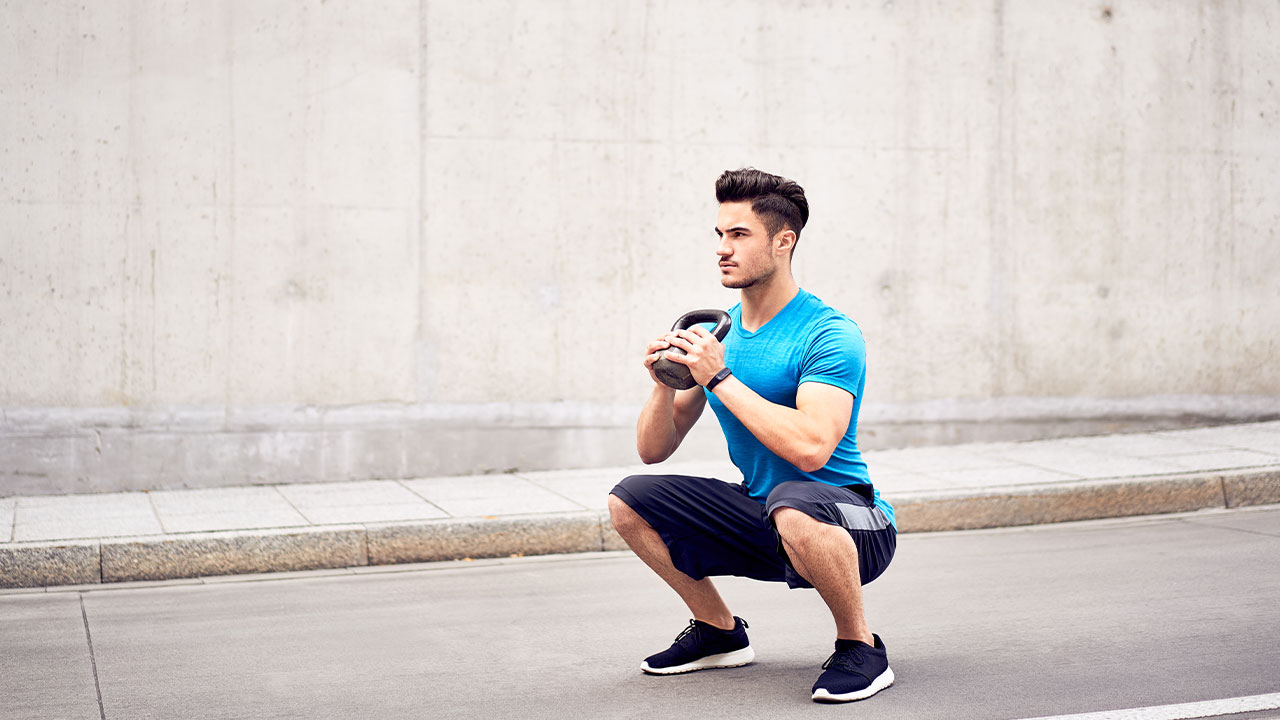Perfect Squats & Lunges even With Back/Knee Issues

Hey Angels and Alphas,
Throughout the male and female fitness world, you know there are hundreds, if not thousands, of different exercises and moves you can do to boost your fitness before you pursue more funky variations that include resistance bands, weights, kettlebells, or other equipment.
But before you head over into that world, your number one necessity should always be to get the basics down first.
Today, we’re here to break down two of the most fundamental exercises for your lower body – squats and lunges – and how you can perform them perfectly even if you have a bad back, achy knees, or have never done them before.
LET’S START WITH SQUATS
The perfect squat involves standing with your feet slightly wider than the width of your hips and your toes pointed a little outward. The wider your stance is, the more you’ll be able to rotate your feet out and establish a strong base of support.
Look straight ahead at all times and try to keep a neutral spine. Reach your arms out in front and make them parallel to the ground. Focus on keeping the weight of your body in your feet as you drop down and only lean forward only slightly, keeping your chest up, until you reach the point in which you feel like your form will suffer if you go even slightly lower. Especially as you rise back up, make sure to contract your glutes.
Theoretically, people squat all the time, so they should be good at it… correct?
But squatting down so you can pick something up isn’t the same motion as the standard squat. This is because people tend to lean forward when they’re reaching for an item. In the gym, that form can continue.
How to achieve perfect squat form if you have a bad back:
Many people usually don’t keep their back flat, which is also called a “neutral position.” Instead, their back is either rounded at the top or at the point of the lower back they’re either hyperextending or arching.
Both of these can cause injury, especially if you’re doing multiple reps and sets.
This rounding may occur because someone doesn’t really trust the strength of their legs and it can be resolved through just gaining confidence or lowering the weight. The other, however, isn’t so easy — that arching low backer is often caused by hips that don’t have enough flexibility.
How to achieve perfect squat form if you have knee issues:
One of the most common issues with squats is in the knees and the fact that they turn in on the descend. This usually happens because the inner thighs are weaker than the outer thighs which is a problem that develops if you sit for extended periods of time.
If you’re a beginner, you should start with doing stand-ups and sit-downs because this will reinforce the basic movement you have to do every day. When you cannot get down to a 90-degree bend in your knees, you can take away the sitting part of it and switch to having them just slightly tap the surface before you come back up. After they master that, you can pretty much take away the seat altogether.
LET’S TALK ABOUT LUNGES
In a perfect lunge, one foot comes forward while the other comes back, and all of this happens while the front leg is bent at a 90-degree angle.
Your feet should be in line with your hips, but this doesn’t mean it should feel like you’re on a tightrope, but instead, more like you’re standing on two planks of wood while the heel of the back foot is slightly lifted.
How to perform the perfect lunge if you have back issues:
Much like the squat, lots of people tend to start involving their back to create stability in their lunge instead of engaging the muscles of their core.
If you want to avoid this, you can try anchored resistance bands or anchored weights so you can help activate your core and keep your posture upright without engaging your back. From this point, you will easily be able to focus on the glutes and legs. If you can hold a weight in each hand, this could be a great way to keep yourself from tipping forward in your lunges.
How to perform the perfect lunge if you have knee issues:
Another great alignment tip is to keep your knees from bending too far over your ankles. This can put pressure on the ankle and knee joints and should be avoided. Some other common mistakes are to have a stance that’s not wide enough, as well as not focusing on your stability (which causes the front knee to collapse inward.)





